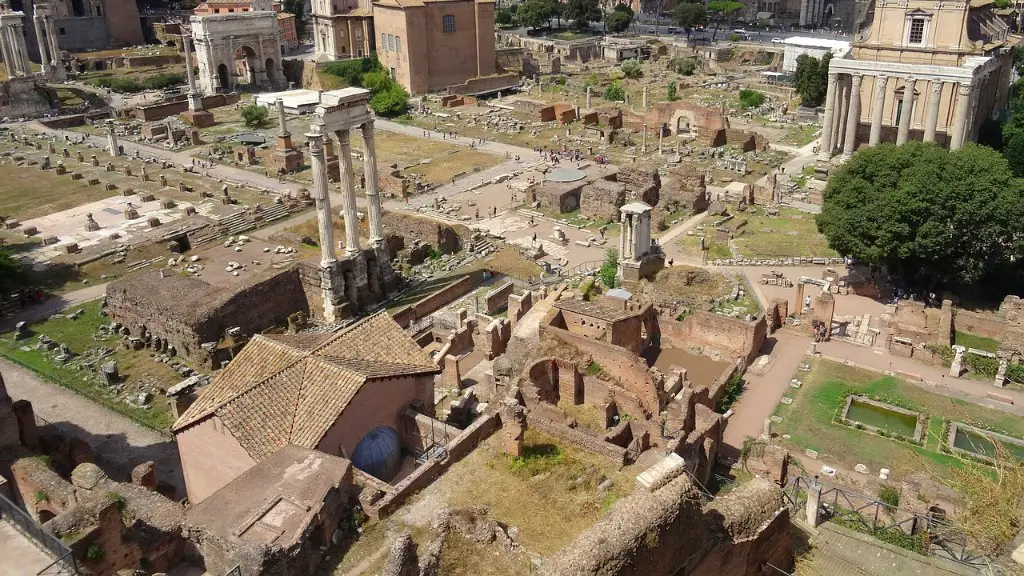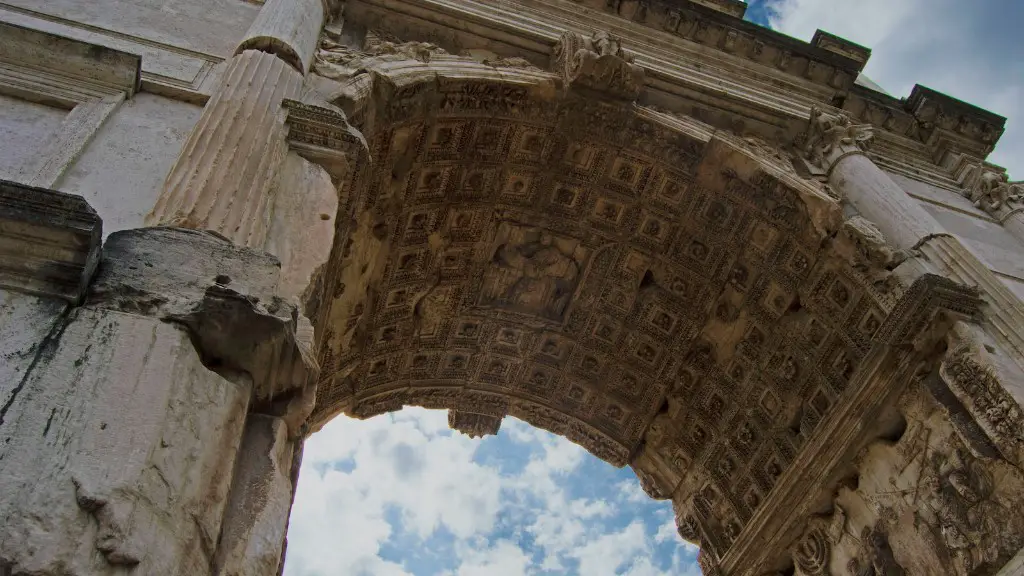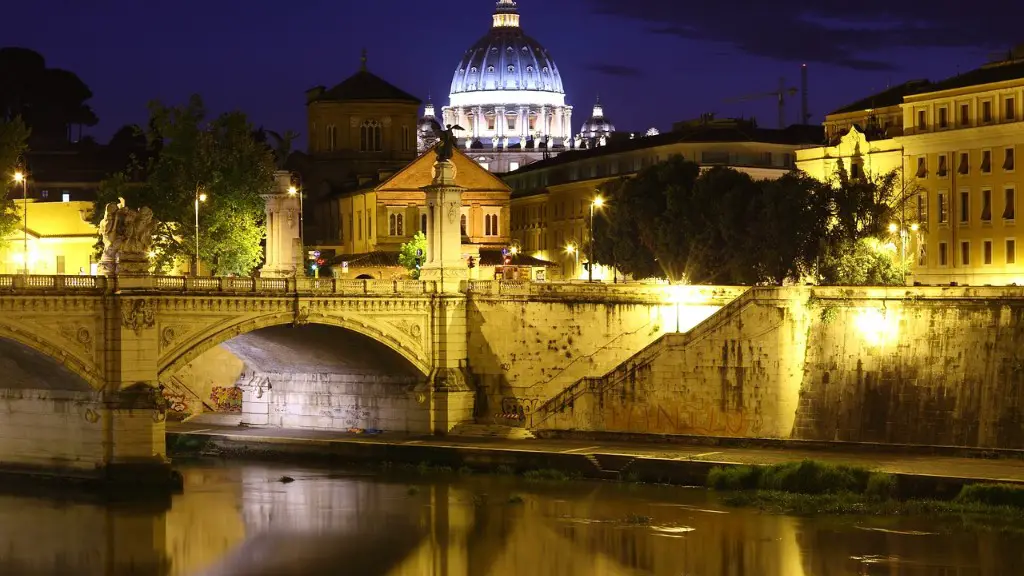When was the Aqueduct Created in Ancient Rome?
The aqueducts of Ancient Rome were a system of bridges and underground channels used to sustain water supply to the Roman Empire. This system, while mastered by the Ancient Romans, was actually a modernized version of similar structures built by their predecessors over 2000 years prior. Without the aqueduct bridges, Rome and its vast population would have not been able to survive. The aqueducts of Ancient Rome remain some of the most iconic symbols of the Empire and have stood the test of time for centuries.
The original aqueduct building took place between 312 BC and 226 BC, and the feat of engineering was heavily utilized for about 500 years. Although the majority of the engineering for the bridge system was completed in 226 BC, some Roman historians believe that the aqueduct started being used as early as 312 BC. It is debated by scholars whether all of the aqueducts were built during this period, or, if they were completed and modified bit by bit over the centuries.
The construction of the aqueducts was an incredible feat. The networks had to traverse long distances, often over difficult terrain. The designers made use of existing terrain, traversing valleys and hills, in order to reduce the amount of construction and engineering effort required.
Initially, water was supplied by various lakes and rivers within the city, in addition to public baths, cisterns, and public fountains. However, as the city of Rome grew and its population expanded, the local water supply could not meet the demands of the booming population. Thus, construction of the aqueduct bridges was essential for the city’s survival.
The aqueducts were about 25 kilometers in length at their longest and included arches as tall as 27.4 meters. In total, it is estimated that the bridges supplied over 22,000,000 cubic meters of water to the city of Rome each year. Ancient historical accounts speak of a thriving metropolis, with wealthy palaces and temples that were supplied by the aqueducts.
However, despite the heavy reliance on the aqueducts, their construction and maintenance often fell through the cracks. The bridges were subject to natural erosion, human negligence, and outright damage. This led to their dismantling during the fourth and fifth centuries when the Roman Empire began to decline.
The Cost of Aqueducts
Building and maintaining the aqueducts was an incredibly costly task. Historians estimate that the aqueducts were funded and exploited by a combination of the Roman Senate, wealthy citizens, and the occasional loan from outside sources. Some scholars have estimated that the construction of the aqueducts could have amounted to about 10% of the Roman Empire’s annual budget.
The cost of building and maintaining the aqueducts went beyond just the financial expense. Hundreds or possibly even thousands of laborers were estimated to be employed in some way, either during the construction, maintenance, or operation of the aqueducts. Furthermore, engineers and architects had to be employed and compensated for their valuable skills in the construction of the aqueducts.
For centuries, historians have debated whether or not the aqueducts were worth their expense. To many, the answer is a resounding yes as it is likely that without them, the city of Rome would not have been able to sustain its population. To others, however, it is possible that the high expense could have been avoided if more efficient management strategies had been employed.
Legacy of the Aqueducts
The legacy of the aqueducts remains alive to this day. The bridges are still visible across the Italian terrain, and an impressive array of ruins still stand. Even today, more than two millennia after their construction, steps are being taken to repair and maintain them in order to keep their legacy alive.
The aqueducts of Ancient Rome remain some of the best examples of Ancient Roman engineering. Today, many modern cities still draw inspiration and ideas from these structures, creating similar infrastructure and utilizing their wisdom. Visitors and scholars alike still flock to these structures, amazed by the grandeur and ingenuity of the aqueducts of Ancient Rome.
Modern Day Aqueducts
Since the construction of the ancient aqueducts, water-supply networks have become a necessary part of many modern cities and countries. As populations increase and water sources grow scarcer, engineers and policy makers need to decide how to best utilize and protect water resources. Aqueducts have been employed in many countries in the form of both canals and pipelines in order to transport and deliver water to their citizens.
For example, The Central Arizona Project, a system of canals and Aqueducts across the United States, is the largest aqueduct network in the country. The network spans hundreds of miles and supplies water to Arizona, Nevada, and New Mexico. It remains an iconic example of engineering and modern aqueduct designs, and has been credited with helping maintain water supplies in a densely populated part of the world.
Aqueducts also serve a purpose outside of delivering water. Their construction can provide a source of employment and investment, and ultimately boost the narrative of resilience and cooperation between states, provinces, and territories. This can be especially seen when water becomes scarce and special agreements need to be met in order to secure water access for all parties, without disruption.
Ancient Knowledge Applied in Modern Times
It is evident that knowledge gained by the ancient Romans has been applied in many aspects of modern water infrastructure. It is highly likely that the aqueducts of Ancient Rome were the first structures built in order to transport water. This knowledge has transferred across millennia and been improved upon by specialists in the field. Modern aqueducts still hold the same function of transporting water to a large population, however, they often boast more efficient designs, materials, and maintenance practices.
Despite the advanced designs of modern aqueducts, the Ancient Roman aqueducts remain a prominent symbol of their time. They stand in ruins as a testament to their strength, their efficiency, and many of their secrets have yet to be uncovered. We can take from the Ancient Roman’s designs and use them to improve the modern water supply networks so that both can exist in tandem with one another.
Preserving Aqueducts As Historical Monuments
While aqueducts may take a backseat to other forms of infrastructure, they remain historical monuments of great cultural importance. For centuries, they have provided water to communities and cultures, and inspired the creation of new systems in many countries. It is important to recognize the contribution that aqueducts have made in many parts of the world and in many different eras.
The aqueducts of Ancient Rome, especially, have been preserved over in many forms such as paintings, literature, and ruins. The ruins are an important reminder that Roman engineering was ahead of its time and that many of the same principles still apply today. It is our responsibility to protect these monuments to humanity and to strive towards the same spirit of engineering and ingenuity that the Ancient Romans put into their aqueducts.
Rome’s Aqueduct Bridges: A Testimony to Human Resilience
The aqueducts of Ancient Rome serve as a reminder of human determination and resilience in the face of adversity. In a time where the water supply was scarce and resources were limited, people were able to come together and make use of existing systems to sustain their population. This was done with an engineering feat that is still impressive even to this day.
The aqueducts of Ancient Rome will hopefully serve as an example of human resilience and determination for centuries to come. They are evidence that people can put their minds together and achieve extraordinary things. Even with limited resources, people can transcend their circumstances and build a lasting legacy along the way.




